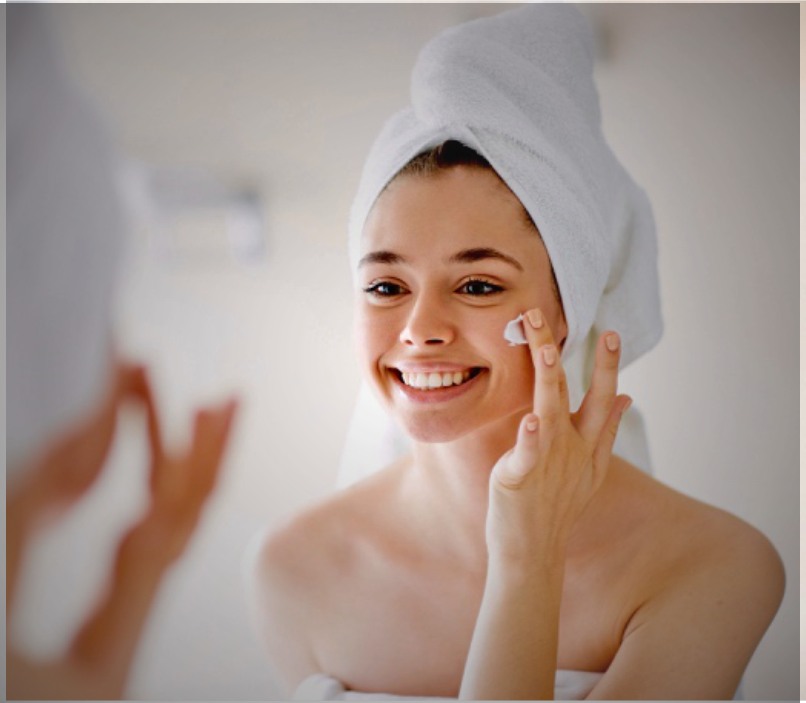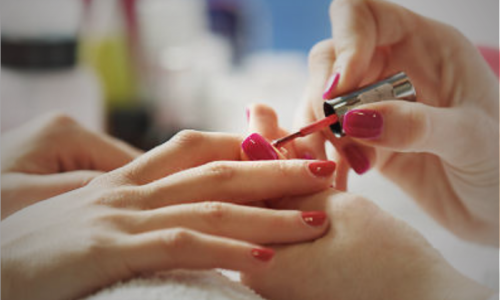
Achieving youthful, healthy skin does not occur instantly. To enhance the health of your skin, strengthen its defenses, and optimize your results, it is critical to adhere to a consistent and best skincare routine.
When deciding on a skin care regimen, we strongly advise scheduling a facial with an experienced, certified practitioner. Estheticians are qualified to recommend professional remedies that enhance results and provide informed advice regarding at-home skin care regimens due to their expertise and training in the field.
In order to augment your understanding, we have compiled the fundamental components of a skin care regimen alongside supplementary suggestions customized to your specific skin type and concerns. For optimal results, apply your skin care products in the following sequence:
- Cleanse
- Exfoliate
- Mask
- Eye Care
- Moisturize
- Body Care
1. Cleanse (Twice per day, morning and night).
A complete cleansing eliminates sebum and detritus from the skin, which can accumulate and cause dullness and congested pores. Furthermore, it facilitates the absorption of the beneficial components in subsequent treatments, thereby priming the complexion for further stimulation. The type of cleanser you select—oil, balm, gel, or cream—will be contingent upon the concerns you wish to address and your skin type.
2. Exfoliate (Once or twice per week).
It is vital to exfoliate in order to promote healthy skin cell turnover, remove accumulation, and alleviate pore congestion. Exfoliants include mild chemical, enzymatic, and physical formulations designed for personal use, in addition to more robust peels and treatments that require professional administration.
Consult your esthetician in order to ascertain the most suitable method for addressing your specific skin type and concerns. We recommend consulting with your esthetician to determine the best approach for your skin type and concerns.
3. Mask (Once or twice per week).
A face masque is an additional treatment that can be indulged in. Face masks are composed of nutrient-dense components and concentrated vitamins that effectively penetrate the skin, imparting a youthful and resilient appearance.
Beyond their beneficial effects on hydration and firmness, masks can also be utilized to manage enduring skin issues such as acne, enlarged pores, and dark spots. In addition to their hydrating and firming benefits, masks can be used to control more persistent skin concerns like acne, large pores and dark spots.
4. Eye Care (Twice per day, morning and night).
In certain areas, a gentler approach is necessary. Seven times thinner than the remainder of the face, the skin around the eyes requires special attention. Consistent utilization of eye cream not only preserves the vitality, suppleness, and resilience of this sensitive region but also diminishes the appearance of faint creases, furrows, dark circles, and puffiness.
Regular eye cream application not only maintains the health, thickness and elasticity of this delicate area, it also reduces the look of fine lines, wrinkles, dark circles and puffiness.
5. Moisturize (Twice per day, morning and night).
Daily application of moisturizers maintains soft, supple, and protected skin. In addition to addressing and remediating particular concerns within the uppermost strata of the skin, moisturizing additionally imparts essential reinforcement to the skin’s inherent lipid barrier.
By virtue of a robust and sound barrier, the epidermis is more capable of retaining moisture and repelling external irritants. Bear in mind that even oily skin requires hydration and nourishment.
6. Body Care (Daily, or as required).
Skin hygiene does not conclude with the decollete. Continent on your skin condition and concerns, areas of distress may also manifest on the remainder of your body. Implement a comprehensive skin care regimen by utilizing nutrient-dense body products that maintain youthful and robust skin from the crown of the head downward.
Customizing Your Skin Care Routine
Together, you and your esthetician can tailor a routine to your specific skin type and concerns once you have mastered the fundamentals. Consequently, the product selection for each stage of your skin care regimen will be determined by this factor.
- Skin Types
- Skin Concerns and Conditions
Skin Types
Genetics function in the determination of skin condition. The size of your pores, the quantity of oil produced by your sebaceous glands, and the texture of your skin are all determined by your DNA. Each of these elements contributes to the oiliness or dehydration of your epidermis as a whole.
Although there is no way to alter one’s skin type, it is possible to effectively manage it through the use of appropriate skin care products. Skin varieties can be broadly classified into five distinct variations:
- Normal Skin
- Dry Skin
- Oily Skin
- Combination Skin
- Sensitive Skin
Uncertain regarding your epidermis type? It is simple to determine whether you have combination, sensitive, dry, or oily skin using this skin type test.
Normal Skin
“Normal” complexion can be described most accurately as balanced. It possesses consistent hydration and moisture, a uniform texture, and minute pores; there are no evident problem areas. Normal skin types may occasionally encounter oily or dry patches, in addition to the possibility of an occasional eruption. In general, normal skin appears and feels healthy; however, occasional breakouts and moderate dehydration or oiliness are possible side effects, especially when the skin is exposed to environmental stressors.
A typical skin care routine should therefore prioritize the protection and welfare of the epidermis. Furthermore, while fortifying the skin with antioxidants, consider making slight modifications to your regimen in accordance with current concerns and circumstances. Choose products designed for dry skin during periods of dehydration; for oiliness and/or breakouts, select products that target blemishes and balance the complexion.
Dry Skin
Dry skin generates significantly less sebum than normal skin. This skin type is deficient in the lipids required for hydration and delicate, supple skin. On the cheekbones, jawline, and forehead, granules may occasionally appear, and the skin may feel taut and dried. In the vicinity of the eye and lip contour, individuals with drier skin may exhibit more pronounced fine lines and fissures that are virtually imperceptible.
Utilizing daily moisturizers and moisture-rich products such as oil or cream cleansers to replenish skin moisture throughout the day, in addition to a rich night cream to heal skin while you slumber, is essential. Additionally, weekly application of moisturizing masks is recommended to reduce the appearance of fine lines and wrinkles and to soften and enhance the skin.
Oily Skin
In contrast to dry skin, oily skin is characterized by an excess of sebum produced by overactive sebaceous glands. Although sebum is essential for lubricating the skin and maintaining its moisture barrier, excessive production can result in an oily complexion characterized by visible pores and an increased susceptibility to blotches and blemishes. While fine lines and creases appear less prominent on this skin type, regular maintenance is necessary to regulate luster and prevent blemishes.
Combination Skin
Combination skin is distinguished by its uneven oil production, which does not result in an excessively dry or oily appearance. Combination skin is characterized by an imbalance of oil gland activity, with higher activity in the T-zone relative to other areas (forehead, jaw, and nose), and lower activity in the cheekbones, mandible, and hairline.
Sensitive Skin
Sensitive skin is extremely prevalent, affecting fifty percent of the population, per the American Academy of Dermatology. This form of skin is prone to irritation, erythema, and has fine pores. It frequently reacts negatively to abrasive cosmetic ingredients, unfavorable climate and weather conditions, and hormonal imbalances.
SOURCE: Eminenceorganics


